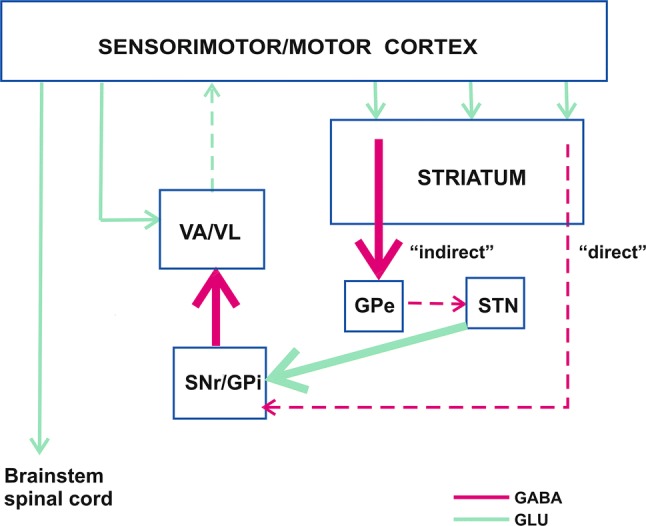Fig. 1.

A “classic” model of neuronal activity in the cortico-basal ganglia-thalamo-cortical circuit in Parkinson’s disease (PD) according to DeLong [13] (modified). Bold arrows indicate activated neuronal pathways, dashed arrows indicate inhibited neuronal pathways. Due to dopaminergic deficiency in PD, the “indirect” GABAergic pathway from the putamen (a part of the striatum) to GPe is disinhibited which results in inhibition of the GABAergic pathway from the GPe to the STN, and disinhibition of the glutamatergic route projecting from the STN to the SNr/GPi. On the other hand, loss of dopamine leads to decreased activation of the “direct” GABAergic pathway projecting from the putamen to the SNr/GPi. Finally, glutamatergic activation of the SNr/GPi prevails over GABAergic inhibition of these structures, which leads to activation of their output GABAergic pathways going to the VA/VL nuclei of the thalamus. As a result, glutamatergic efferents of these thalamic nuclei to the sensorimotor/motor cortex are inhibited. Brain structures: GPe the external segment of the globus pallidus, GPi the internal segment of the globus pallidus, SNr the substantia nigra pars reticulata, STN the subthalamic nucleus, VA/VL ventroanterior/ventrolateral nuclei of the thalamus. Neuronal pathways: GABA GABAergic pathway, GLU glutamatergic pathway
